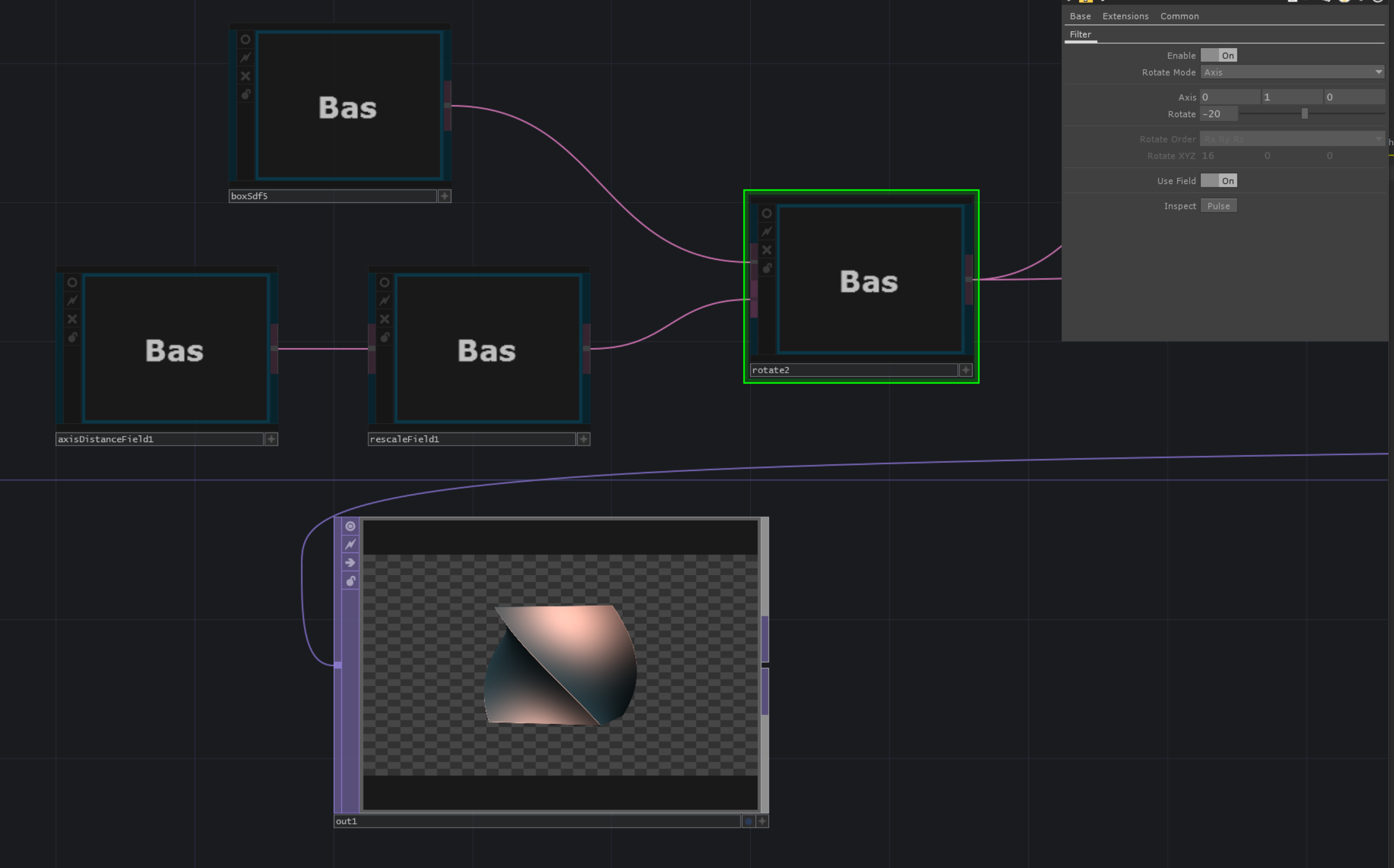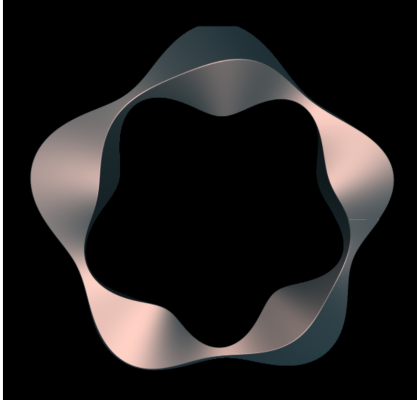Fields
Fields are operators that are similar to SDFs, but instead of producing hits on surfaces, they come up with either 1 or 4 numeric values (either a float or a vec4).
Other operators use fields to control behavior depending on where a point is in space.
For example, you can recreate what the twist operator does using a rotate with a value field controlling the Rotate parameter, applying different amounts of rotation at different coordinates along the axis.

Field Types
There are two different kinds of data that a field can produce:
Float: a single numeric value.Vector: 4 numeric values.
ROPs that use fields may support one or both of those types.
How Fields are Used by ROPs
Operators like rotate use the provided field to decide how much rotation to apply at each position in space. The rotate asks the field what the values are for the current position and gets back either a single number of a set of 4 (a vector). If it’s a single number, and the rotate is using the mode that spins around a single axis, that single number is applied to the rotation around the axis. If it’s a vector and rotate is using the Euler XYZ mode, the first number is applied to X rotation, the second to Y, the third to Z, and the fourth is ignored.
Position-Based Fields
The simplest case of a position-based field is positionField. It takes in the provided coordinates, and just returns them (along with an extra 0 to fill the vector).
The pointDistanceField is similar, but instead it returns the distance between the provided coordinates and some other point in space. Unlike positionField, it returns just a single value (the distance).
Most filters that are used for SDFs can also work for fields that use positions. If you had a positionField and you passed that through a translate would return values that are offset by some distance.
Non-Position Fields
While fields make use of the parameters that are passed to them, they don’t necessarily have to. Some operators like lfoField ignore the provided coordinates and use other sources of data to produce values. In the case of lfoField, it uses the current time from either the global application time or from the associated timeline.
Ways That Coordinates are Passed to Fields
When an operator is using a field input, it provides some form of coordinates to that field. The most common case of this is to just pass along the position where that operator is being evaluated. In most (or all) cases where the field accepts the same type of coordinates as the operator that is using it, that same position is being passed along.
In other cases, an operator might accept a field that takes a different type of coordinates than what the operator uses. These operators will provide the field with some other type of value as the coordinates. Each operator that does this handles it differently. For example, if a field using 1D coordinates is passed into mobiusRingSdf, it will give it the angle of the current point around the axis of the ring. This can be used with a waveField to vary the thickness of the ring with a sine wave that wraps around the ring’s axis.

Operators that support these types of inputs will document which types of coordinates they support and what kind of values they use for each type.